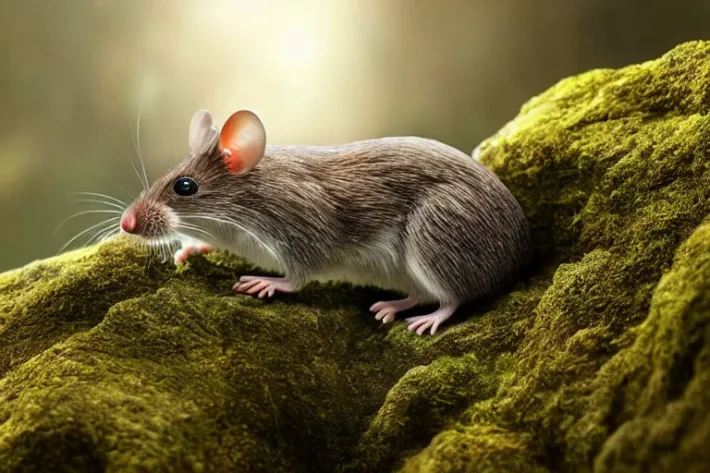The Malagasy Mountain Mouse: A Hidden Gem in Madagascar’s Highlands
Imagine a tiny creature that has been hiding in the shadows of Madagascar’s highlands for decades, only to be discovered and described nearly a century after its first sighting. The Malagasy mountain mouse, or Koopman’s montane voalavo (Monticolomys koopmani), is one such enigma. This rodent has captivated the attention of biologists with its unique appearance and behavior, making it a fascinating subject for study.
Physical Characteristics: A Cloak of Shadows
The Malagasy mountain mouse is a small, elusive creature that blends seamlessly into its environment. With dark brown upperparts and dark gray underparts, this rodent almost disappears in the dense forests where it resides. Its small rounded ears and broad feet with well-developed pads make it an agile climber, capable of navigating both trees and ground with ease.
But what truly sets this mouse apart is its long tail, which lacks a tuft at the tip—a feature that distinguishes it from other similar species. The tail, covered in small scales and light brown hairs, serves as a perfect balance for its movements through the forest canopy.
Nighttime Adventures: A Nocturnal Hunter
Active primarily at night, the Malagasy mountain mouse is a nocturnal hunter. Its diet consists of fruits and seeds, which it finds in the lush forests that stretch from 800 to 2,200 meters above sea level. In captivity, it has been observed eating Agarista fruits, suggesting its natural habitat provides similar sustenance.
With a body mass ranging from 18.5 to 27.5 grams and a head and body length of 84-101 millimeters, this rodent is small but mighty. Its long hindfeet with prominent pads and the unique structure of its claws make it an efficient climber and ground dweller.
Skull Structure: A Delicate Design
The skull of the Malagasy mountain mouse is a marvel of nature, small and delicate. Its narrow front part and rounded nasal bones give it a unique appearance. The zygomatic plate extends back to the first upper molar, while the interorbital region is narrow and hourglass-shaped, without crests or ridges.
The palate is broad and lacks indentations, contributing to its overall streamlined design. With 13 thoracic, 7 lumbar, 4 sacral, and 38 caudal vertebrae, the spine of this rodent is perfectly adapted for its lifestyle in the highlands.
Behavior: Solitary and Scansorial
The Malagasy mountain mouse is a solitary creature that prefers to scan its surroundings from above. It produces litters of up to three offspring, ensuring the continuation of its species. Its nocturnal nature makes it difficult to observe in the wild, but when seen, it moves with grace and agility.
As a scansorial species, this mouse is well-equipped for life both on the ground and in the trees. Its broad feet and well-developed pads provide excellent traction, allowing it to navigate even the most challenging terrains of Madagascar’s highlands.
Conservation Status: A Species of Least Concern
Despite its unique characteristics, the Malagasy mountain mouse is currently listed as ‘Least Concern’ on the IUCN Red List. This status reflects its widespread distribution across eastern Madagascar’s mountain ranges and its presence in protected areas.
However, threats such as fires and habitat conversion into agricultural land pose significant risks to this species. Conservation efforts are crucial to ensure that future generations can continue to marvel at the beauty of these tiny creatures.
The Malagasy Mountain Mouse: A Symbol of Endemic Biodiversity
As we delve deeper into the world of Madagascar’s endemic rodents, the Malagasy mountain mouse stands as a testament to the island’s rich biodiversity. Its discovery and study have contributed significantly to our understanding of the unique ecosystems that thrive in the highlands.
By preserving these habitats and supporting conservation efforts, we can ensure that species like the Malagasy mountain mouse continue to play their vital roles in Madagascar’s complex ecological web. After all, every creature has a story to tell about the world it calls home.
You want to know more about Malagasy mountain mouse?
This page is based on the article Malagasy mountain mouse published in Wikipedia (retrieved on November 27, 2024) and was automatically summarized using artificial intelligence.








